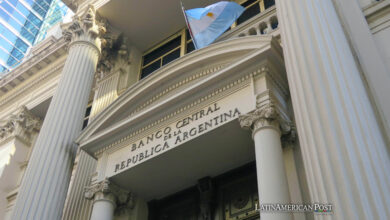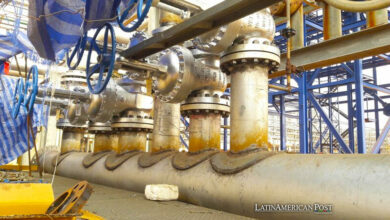How did Menem manage to defeat hyperinflation?
The death of the former Argentine president allows us to remember his successes and failures during his government.

With the recent death of Carlos Nemen, we decided to review the successes and failures of his government. / Photo: Flickr-IAEA Imagebank
LatinAmerican Post | Santiago Gómez Hernández
Listen to this article
Leer en español: ¿Cómo logró Menem vencer la hiperinflación?
No matter when Argentina is looked at, this southern country seems to be frozen in time. They always have the biggest player in the world (Di Stefano, Maradona, Messi), they always play the World Cup against Nigeria, they always have charismatic politicians (especially women), a Peronist president, and they are always on the verge of hyperinflation. Argentina is like our favorite song: no matter what year it is, we always listen to it on a loop.
Murió el ex Presidente Carlos Menem. Su impronta reformista y modernizadora fue autodestruida por su ambición hegemónica que derivó en la crisis de 2001. Su presidencia se destaca por domar ni más menos que la inflación pero también por la impunidad y la corrupción.
— Cristina Perez LAVÁ BIEN TUS MANOS (@Cris_noticias) February 14, 2021
One of the protagonists in the history of this country died this Sunday, February 14, Carlos Saúl Menem, who was the Argentine president to hold the position for the longest time. Respecting what Argentina is, he came to power from the Peronist party and was the second democratic leader after the dictatorship. Among the achievements made by former President Menem, it stands out to stabilize the country economically after hyperinflation that reached close to 5000% and that the southern country suffered at the end of the '80s.
You may also be interested in: Printing cash as a solution to the COVID19 crisis is possible, but risky
When Menem arrived at the Casa Rosada, he received a country with a hyperinflated currency, inherited by his predecessor, Raúl Alfonsín. The Central Bank of the Republic had run out of foreign currency reserves and had to withdraw from the exchange market. The figures were the highest in the region (even those of Chavista Venezuela): it went from 460% in April 1989 to 764% a month later.
Convertibility Law
In March 1991, the Menem government announced the Austral Convertibility Law. With this policy, the Argentine peso would arrive in 1992. It was decided that the Central Bank should support with its reserves a conversion of 1 peso to 1 US dollar, which would represent a restriction on the printing of banknotes by the Argentine government. This also led to great consequences for the national economy as an important source of funding from the State was cut off.
Raúl Alfonsín le entrega los atributos presidenciales a Carlos Menem, quien asume de manera anticipada el poder.
Fecha: 08/07/1989 pic.twitter.com/hAnkISGF3W
— Raúl Alfonsín (@AlfonsinEpopeya) February 15, 2021
This solution that Menem found was successful in stopping the inflation levels that Argentina had reached, bringing financial stability and a GDP growth of 10.5%.
It also needed to privatize numerous companies and adopt a neoliberal free-market policy. During his government, companies such as Entel (telephony), a large part of the railway network, Yacimiento Petroliferos Fiscales (YPF), and Aerolínea Argentinas, among others, were privatized.
But, as a good Latin American politician, Menem had several mistakes and shadows in his government. In addition to several corruption scandals and the loss of his son in a helicopter accident, which to this day continues to be investigated by the courts.
He is also remembered for having pardoned a number of generals during the dictatorship and also several leaders of armed opposition groups. Even a scandal of Argentine arms sales to Ecuador, Croatia, and Bosnia-Herzegovina (during the Balkan war).
Murió Carlos Menem. Asumió el consenso de Washington para la Argentina, traicionando el ideario Justicialista. Nos tocó lidiar contra la privatización de Aerolineas Argentinas: usó el primer Per Saltum para imponerla.Liquidó los ferrocarriles, la flota fluvial,la seguridad social pic.twitter.com/nj2CebnjoP
— Alicia Castro (@AliciaCastroAR) February 14, 2021
At the international level, Menem was ironically an ally of Washington. Despite his Peronist background (like today's socialist leaders in Argentina), the former president ordered the dispatch of troops to the Persian Gulf. He also tried to join NATO, but gave up due to possible diplomatic disputes with Brazil; and began the process of including the country in the OECD. He was also a great promoter of regional integration and was one of the promoters and founders of the Southern Common Market (Mercosur).
El tajante mensaje de Hebe de Bonafini por la muerte de Carlos Menem: “No lo lamento ni deseo que descanse en paz” https://t.co/kCdqqnX0FA
— TN – Todo Noticias (@todonoticias) February 15, 2021





